 | |
| Author | Anthony Armstrong |
|---|---|
| Language | English |
| Genre | Thriller |
| Publisher | Methuen |
Publication date | 1952 |
| Publication place | United Kingdom |
| Media type | |
He Was Found in the Road is a 1952 thriller novel by the British author Anthony Armstrong. [1] [2]
 | |
| Author | Anthony Armstrong |
|---|---|
| Language | English |
| Genre | Thriller |
| Publisher | Methuen |
Publication date | 1952 |
| Publication place | United Kingdom |
| Media type | |
He Was Found in the Road is a 1952 thriller novel by the British author Anthony Armstrong. [1] [2]
In 1956 it was adapted into the British film The Man in the Road directed by Lance Comfort and starring Derek Farr, Ella Raines and Donald Wolfit. [3]
Road House is a 1934 British comedy crime film directed by Maurice Elvey and starring Violet Loraine, Gordon Harker and Aileen Marson.

Running Water is a 1907 adventure novel by the British writer A.E.W. Mason. The story could be defined as mountaineering crime fiction with a romantic twist.
Carlos Otero (1916–1979) was a Portuguese film and television actor. He was married to the actress Isabel de Castro.
Léon Belières (1880–1952) was a French film actor.

Come Back Peter is a 1952 second feature British comedy film directed by Charles Saunders and starring Patrick Holt, Peter Hammond and Humphrey Lestocq. It was an independent picture by Charles Reynolds Productions.
Michel Barbey is a French stage, film, and television actor known for his comic roles. He starred in the 1950 film Dominique.

Georges Tabet was a French Algerian actor, musician and screenwriter. During the 1930s he appeared frequently alongside Jacques Pills.

The Tall Headlines is a 1950 thriller novel by the British writer Audrey Erskine Lindop. A middle-class British family are lest devastated and divided when the eldest son is arrested and hanged for murder.
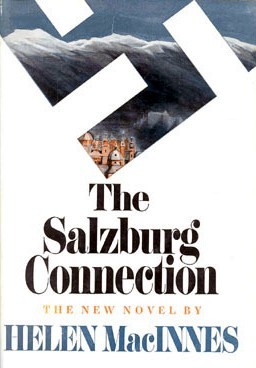
The Salzburg Connection is a 1968 spy novel by the British-born writer Helen MacInnes. A British intelligence agent attempts to retrieve a box hidden in Austria containing a list of the names of Nazi collaborators left over from the war. Before long several other agencies are also after the prize.
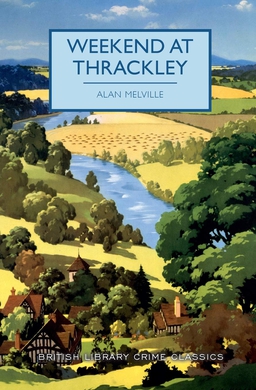
Weekend at Thrackley is a 1934 detective novel by the British writer Alan Melville. A whodunit with comic overtones, it takes the form of a country house mystery, a genre at its height during the decade. His debut novel, it was a commercial success and led to him giving up his job in the timber trade to become a full-time writer. It was reissued in 2018 by the British Library Publishing, as part of a group of crime novels from the Golden Age of Detective Fiction.
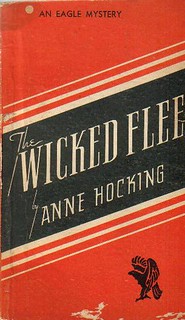
The Wicked Flee is a 1940 mystery crime novel by the British writer Anne Hocking. It was the second novel in a long-running series featuring her detective character Chief Inspector William Austen of Scotland Yard.
Salute the Toff is a 1941 crime thriller novel by the British writer John Creasey. It is the sixth in his long-running featuring the gentleman amateur detective The Toff.
Peter Blackmore (1909–1984) was a British playwright and screenwriter. His play Miranda was adapted into the 1948 film of the same title. He also wrote the comedy play The Blue Goose which appeared in the West End in 1941. His 1953 play Down Came a Blackbird ran for 53 performances at the Savoy Theatre. He worked on the screenplays for a number of comedy films for British Lion and the Rank Organisation, including two Norman Wisdom vehicles.

Rich Is the Treasure is a 1952 crime novel by the British writer Maurice Procter. It is the second in a trilogy featuring Scotland Yard Detective Superintendent Philip Hunter, which he wrote alongside the better known series featuring Chief Inspector Harry Martineau. The plot revolves around a gang creating counterfeit diamonds.
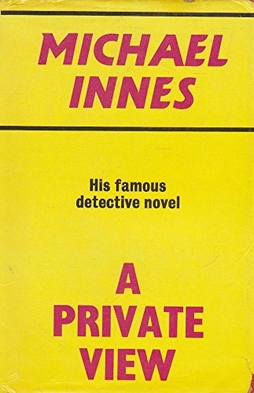
A Private View is a 1952 detective novel by the British writer Michael Innes. It is the thirteenth in his series featuring John Appleby, now an Assistant Commissioner in the Metropolitan Police. It also features the characters of Inspector Cadover and the Duke of Horton who had previously appeared in What Happened at Hazelwood and Hamlet, Revenge! respectively. Appleby's wife Judith also plays a major role in the story.

The House Opposite is a 1931 mystery crime novel by the British writer Joseph Jefferson Farjeon. It was the second in his series of novels featuring Detective Ben, following the 1926 novel Number 17. It was published by the Collins Crime Club which had been established the previous year.

Chéri-Bibi and Cécily is a 1916 adventure thriller novel by the French writer Gaston Leroux. A serial novel, it was the second of four works featuring the character of Chéri-Bibi.
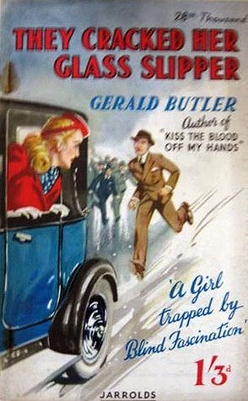
They Cracked Her Glass Slipper is a 1941 crime thriller novel by English writer Gerald Butler. It is his second novel, and was published by Jarrolds Publishing on 18 December 1941. It follows the hardboiled style of his best-selling debut, Kiss the Blood Off My Hands. It is Butler's only novel not to have received an American publication.
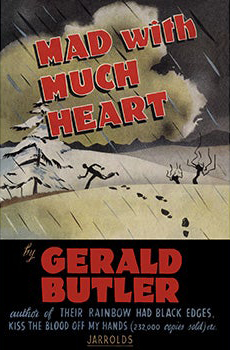
Mad with Much Heart is a 1945 crime thriller novel by English writer Gerald Butler. It was his fourth novel, and second most popular, after Kiss the Blood Off My Hands (1940). The book is written in the noir style popular at the time. The first British hardcover edition was published by Jarrolds Publishing on 28 June 1945. The American hardcover edition was published by Rinehart & Company on 22 August 1946.
The Whispering Woman is a 1949 mystery thriller novel by the British author Gerald Verner. It was part of his series featuring Superintendent Budd. A young cinema cashier when she is passed a threatening note, delivered by her sister who had been handed it by a mysterious woman. Shortly afterwards she is shot dead from behind.